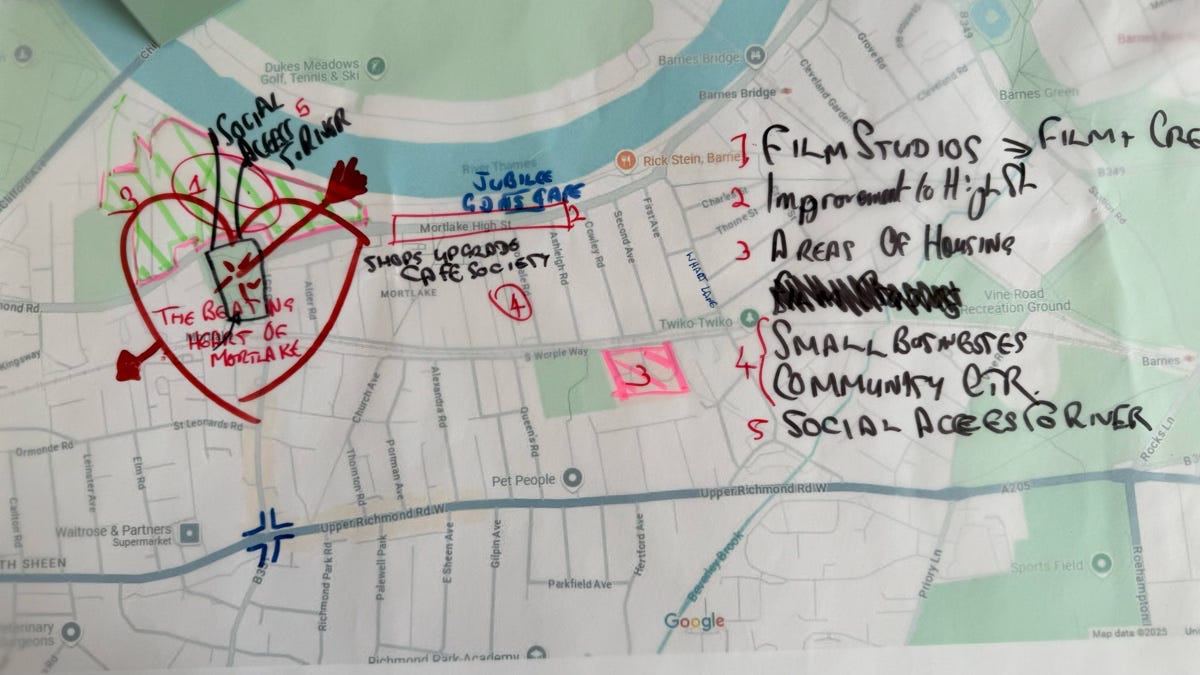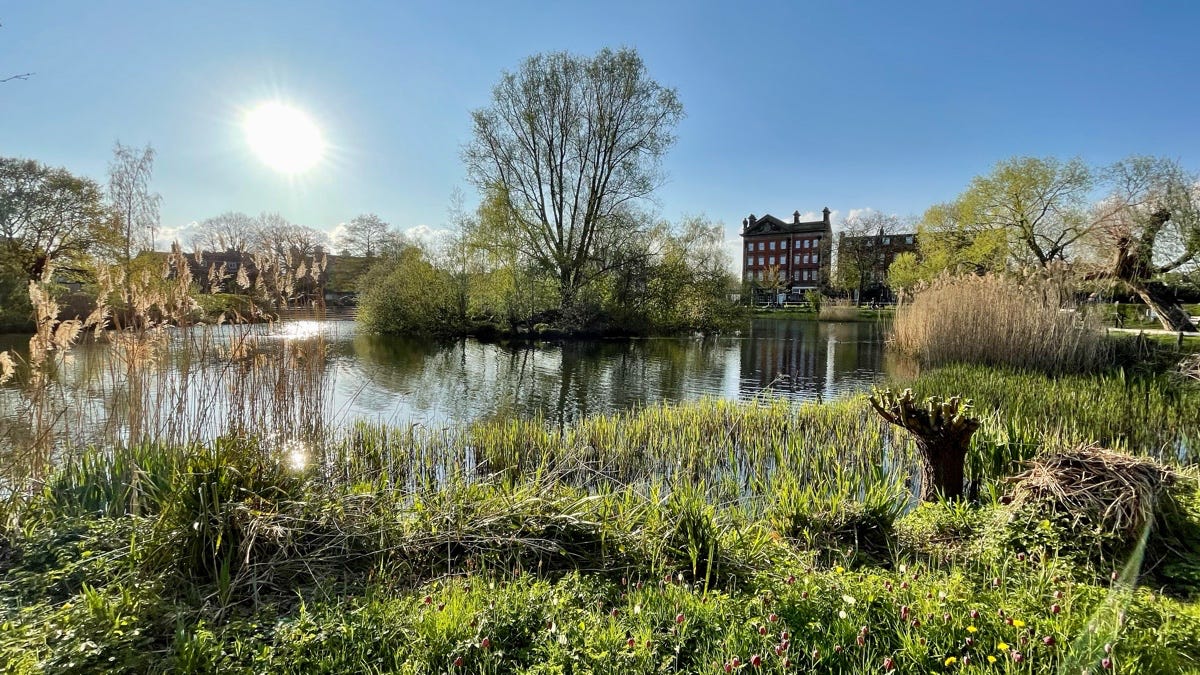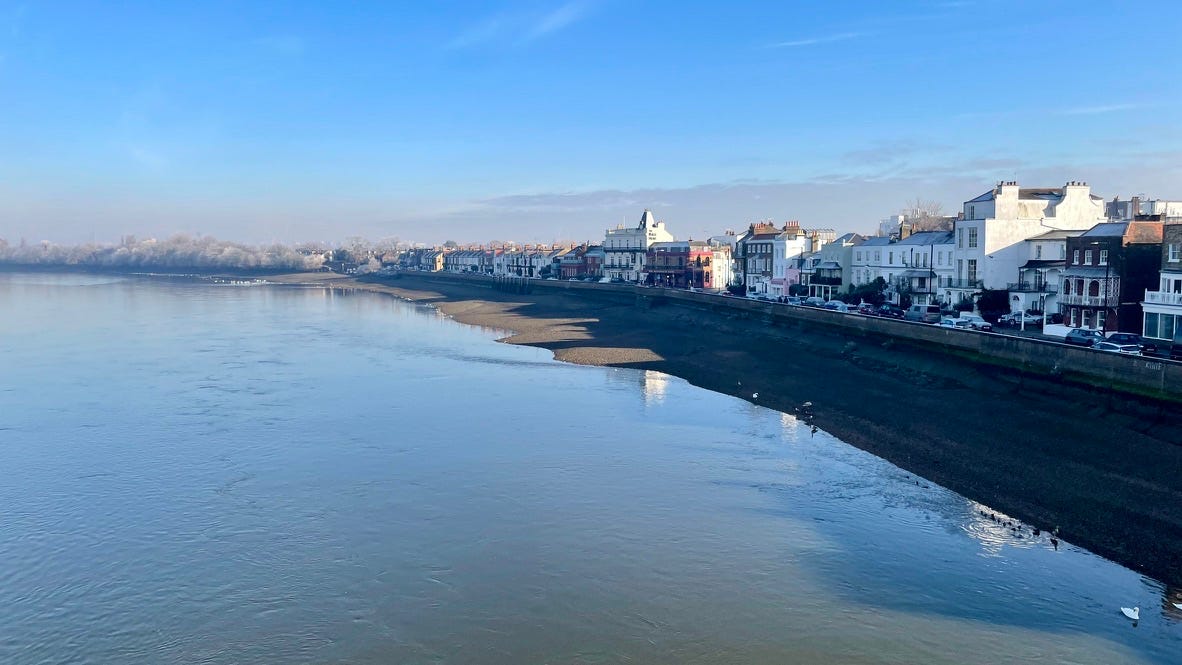More about this blog
Story 1
This was the first story I published in January, 2025.
I’ve reworked it - clarified the thinking - so I’m posting it again.
Over the summer, I’ve talked more openly about Bridged. Most of those conversations include a version of the question, How did this begin?
I realised last week my answer had developed beyond the earlier explanation.
What follows is that new, fuller account.
This is Story 1, revisited.
It’s more than a bridge
How a Thames bridge closure prompted a reckoning: how to live well without worsening the climate crisis.
This is a blog from, about, and in support of Barnes and Mortlake in south-west London.
In April 2019, something changed in my life.
At the time, I couldn’t put my finger on it.
Hammersmith Bridge had closed. While many demanded it re-open immediately, I felt differently. Strangely, I hoped it wouldn’t. And that view — initially more instinct than conviction — set me on a path that led to this blog.
The more I thought about it, the clearer it became: the closure of the Bridge was more than a transport disruption. And working out how I should react to that would draw on experiences that have shaped my thinking over decades — local journalism, the internet, innovation, and climate awareness.
Local journalism
I am a storyteller. It’s in my blood. There is a rich bardic tradition tied to the Conroys in medieval Ireland. ‘The poet endures’, according to one family motto.
Maybe that explains the twenty years I spent in local journalism with the BBC - first on radio, then TV, then online. I worked in Stoke-on-Trent, Coventry, and Birmingham: complex cities that changed the world but which are still working out their role in the present.
I began as a studio assistant and became a reporter, producer, and then editor. BBC impartiality kept me from taking sides. But after years of hosting phone-ins, reporting on town centre regeneration, housing, football, weather, you begin to understand: you’re rooted in your patch. You're on the side of the place.
That job became more than employment. It became an orientation to the world — one I’ve never shaken. Visiting Liverpool in 2024 to watch Fulham play at Anfield, BBC Radio Merseyside and the Anfield Wrap provided the soundtrack. Scouse. Not for me. But magnificent.
Over time, I came to see storytelling not just as a craft, but as a civic force. It shapes belonging, binds communities, and amplifies overlooked voices. The deeper my belief in storytelling grew, the more it aligned with a broader principle: localism. The idea that power, decisions, and resources should sit closer to the communities they serve.
The internet
In the late 1990s, I moved into digital media. It was more than a career decision. It was about the freedom the internet offered. A space less defined by convention, more open to experimentation.
It was slow, clunky, and overwhelmingly American. But it was also liberating. Online, the question was no longer ‘What’s allowed?’ but ‘What’s possible?’
Within ten years, I had a senior role at the BBC, helping shape bbc.co.uk, one of the UK’s most visited websites. The job drew me into national debates on identity, free expression, streaming, and the darker corners of digital culture.
And yet, I’ve never stopped believing in the promise of the internet: not just as a platform, but as a tool for shifting power. From broadcaster to participant. From institution to individual. When used well, it’s an extraordinary force for public good.
Innovation
The next thread had been quietly present all along, woven through the background of my working life.
I’ve spent much of my career helping organisations navigate change. New buildings, new services, new skills, new ways of working.
By 2015 I was leading a team of forward-thinking professionals at the BBC: research engineers, analysts, designers, producers and the like. Their role was to explore emerging technologies to ensure the BBC stayed relevant. Everything they considered involved change.
BBC Research and Development had a global reach. Their technical standards helped billions of people worldwide. A tweak here or there could have profound positive consequences on a range of issues from literacy to social inclusion.
I began to understand the different kinds of innovation — incremental improvements that refine, and transformational leaps that redefine. Many of the changes I’d witnessed over the years fell into place.
Innovation wasn’t about sudden flashes of brilliance by a lone genius. It was about patience measured in years to deliver change at scale. It required navigating resistance, especially from institutions wary of change. Progress meant building coalitions, learning through experimentation, and staying the course even when the benefits weren’t immediately visible.
Climate change
I came to climate change late. In 2015, to be precise. Of course it was affecting me. But like many and despite working in news, and despite reading a newspaper every morning, I remained a passive observer.
What changed?
BBC Research and Development had a team investigating the environmental impact of the media industry. Their findings floored me. I took a course in carbon literacy. Within a year, the entire department — over 200 colleagues — had done the same.
This was just the start.
Changes were happening in my personal life, too. At work they were planned. At home, less so. I cut back on meat in my diet. I bought an e-bike.
In my senior role, I was often invited to open events and set the scene for the challenges ahead. I began outlining a list of generational challenges . Climate change topped that list then. And still does.
Enter The Bridge
By 2019 all the pieces were in place - journalism, localism, digital tools, civic innovation and climate awareness.
In spring that year came the event which set me in a new direction.
Hammersmith Bridge was closed to all traffic.
The Bridge was on my journey to work. I live in Barnes, SW13. I worked in Shepherd’s Bush, W12.
The closure sparked intense local debate over its likely fallout. Over 22,000 cars had been using the bridge everyday. Now they needed to drive somewhere else. Residents, politicians, and commentators demanded the Bridge be re-opened as soon as possible.
I was not so sure.
What is a credible solution?
HL Mencken, the American essayist, observed:
‘There is a well-known solution to every human problem — neat, plausible and wrong.’
This is not a question about whether to fix a bridge. It’s bigger than that.
If climate change is so pressing.
If we each have to make some adjustments.
If transport produces about a quarter of the greenhouse gas emissions in the UK and Richmond borough.
And if we are serious about net zero, why restore this local enabler?
By 2022, with fewer work commitments, I had the time to go deeper. I attended public meetings, spoke to local election candidates asking for my vote on the doorstep and met residents on all sides of the debate.
I came away convinced of one thing: a binary choice - fully restore the bridge for cars or keep it closed to them - misses the point. Either option, alone, is insufficient.
If we allow tens of thousands of cars to dominate this part of London, how does that support net zero? If we keep the bridge for ‘walkers and wheelers’, how do we manage all those cars in this corner of the city?
This needs a more nuanced answer. That means trade-offs. Mitigations. Innovations. Adaptations. The stuff of my career.
I wanted a better answer to the bigger question, how do we balance urgent climate action with the realities of modern urban life?
Theory alone wasn’t going to cut it. What mattered was practical insight — grounded in experience, informed by data, and open to others. I didn’t want to sit on the sidelines with an opinion. I wanted to help move things forward. The bridge had shifted from a local inconvenience to something larger: it had become a test case for how we might respond — fairly and sensibly — to the challenges of climate change in the place we live.
What should I do about this?
A familiar sensation returned, a kind of restless energy. I’ve been here before. Ideas, data, opinions. connections. A colleague once described me in this state as, ‘ .. an ideas factory .. a mini-think tank.’
When I am overwhelmed like this, I turn to models or frameworks to provide structure.
I tried various formulations. One stuck. Since 2024, I have used this question to organise my thinking on this topic:
How do we live well in Barnes during this climate emergency?
The rest fell into place quickly. I considered different ways to answer that question but settled on publishing a blog. This would do several things:
writing helps me think clearly
the result is a knowledge base
and publishing creates accountability
The blog will also buttress my credentials. I am going to need the help of many others to do this. The blog should reassure them this is a serious endeavour.

This is for me, for now
My blog started with an earlier version of this article in January, 2025. In March I felt sufficiently encouraged by the blog to commit to another year.
I plan to grow Bridged slowly and deliberately. At this stage, I’m not promoting it widely or chasing subscribers. It’s a place to think things through, learn in public, and see where ideas go. A workshop, not a platform.
If you’ve read this far, thank you. I hope you’ll take what follows in the spirit it’s offered.
My name is Andy Conroy.
I live in south-west London and have lifetime’s commitment to the public realm.
I am an amateur writer and an aspiring place-maker and environmentalist.
I care deeply about these issues and my city.
I am trying to age with mischief, grace, and a lighter footprint.

